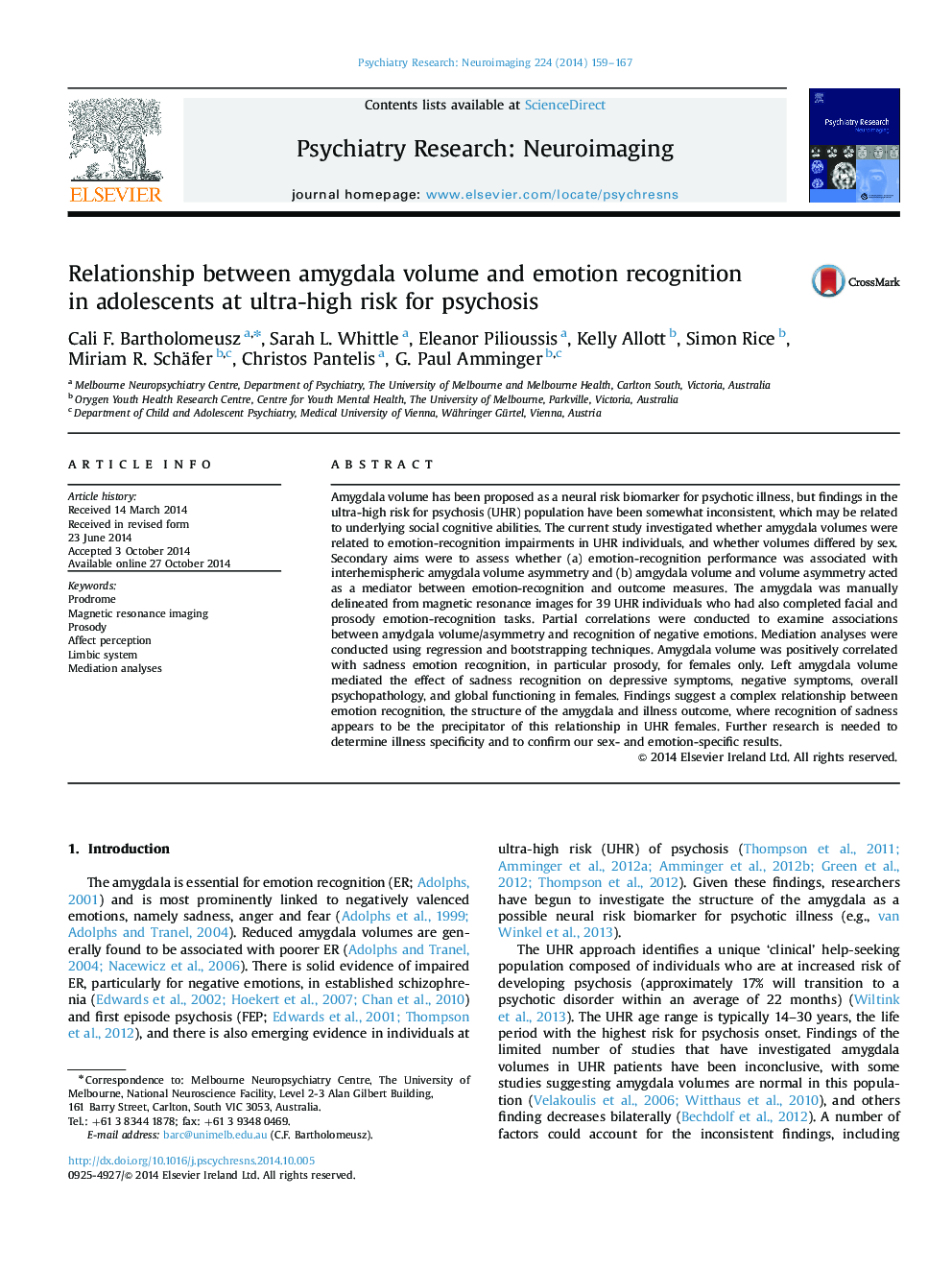| Article ID | Journal | Published Year | Pages | File Type |
|---|---|---|---|---|
| 334746 | Psychiatry Research: Neuroimaging | 2014 | 9 Pages |
•The study explored whether amygdala volumes were related to emotion-recognition impairments in individuals at ultra-high risk (UHR) for psychosis, and whether volumes differed by sex.•The amygdala was manually delineated from magnetic resonance images for 39 UHR individuals who had also completed facial and prosody emotion-recognition tasks.•Amygdala volume was positively correlated with sadness emotion recognition, in particular prosody, for females only.•Left amygdala volume mediated the effect of sadness recognition on depressive symptoms, negative symptoms, overall psychopathology, and global functioning in females.•Further research is needed to determine illness specificity and to confirm the reported sex- and emotion-specific results.
Amygdala volume has been proposed as a neural risk biomarker for psychotic illness, but findings in the ultra-high risk for psychosis (UHR) population have been somewhat inconsistent, which may be related to underlying social cognitive abilities. The current study investigated whether amygdala volumes were related to emotion-recognition impairments in UHR individuals, and whether volumes differed by sex. Secondary aims were to assess whether (a) emotion-recognition performance was associated with interhemispheric amygdala volume asymmetry and (b) amgydala volume and volume asymmetry acted as a mediator between emotion-recognition and outcome measures. The amygdala was manually delineated from magnetic resonance images for 39 UHR individuals who had also completed facial and prosody emotion-recognition tasks. Partial correlations were conducted to examine associations between amydgala volume/asymmetry and recognition of negative emotions. Mediation analyses were conducted using regression and bootstrapping techniques. Amygdala volume was positively correlated with sadness emotion recognition, in particular prosody, for females only. Left amygdala volume mediated the effect of sadness recognition on depressive symptoms, negative symptoms, overall psychopathology, and global functioning in females. Findings suggest a complex relationship between emotion recognition, the structure of the amygdala and illness outcome, where recognition of sadness appears to be the precipitator of this relationship in UHR females. Further research is needed to determine illness specificity and to confirm our sex- and emotion-specific results.
